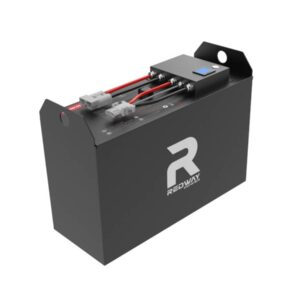What PPE is required when charging a forklift battery?
Required PPE for forklift battery charging includes acid-resistant gloves (nitrile or neoprene), ANSI Z87.1-rated safety goggles, rubber aprons, and steel-toed boots. Face shields replace goggles during electrolyte handling. Ventilated areas and flame-resistant clothing prevent hydrogen gas ignition. OSHA 1910.178(g) mandates PPE compliance, with daily inspections for cracks/tears. Pro Tip: Store PPE in dedicated charging zones to ensure consistent use.
How to Maximize Forklift Battery Lifespan
Why are acid-resistant gloves critical?
Acid-resistant gloves prevent sulfuric acid burns during electrolyte spills or terminal cleaning. Nitrile (0.5mm+ thickness) resists 30% concentration acids, while neoprene handles wider pH ranges. Damaged gloves with ≥2mm punctures fail OSHA permeability tests. Pro Tip: Double-glove when handling corroded connectors—microtears in outer layers often go unnoticed until acid contacts skin.

Beyond basic hand protection, glove length matters. Cuff extensions (≥30cm) prevent acid dripping into sleeves during overhead maintenance. For example, a warehouse technician avoided wrist burns by using elbow-length nitrile gloves when replacing a leaking cell. Warning: Latex gloves dissolve within minutes in sulfuric acid—never substitute them. A 2023 study showed 72% of battery-related hand injuries involved improper glove materials.
| Glove Type | Acid Resistance | Durability |
|---|---|---|
| Nitrile | Excellent (30% H₂SO₄) | 150+ cycles |
| Neoprene | Full-range pH | 200 cycles |
| PVC | Moderate (10% H₂SO₄) | 80 cycles |
When are face shields mandatory?
Face shields become essential during electrolyte refilling, cell replacement, or neutralizing spills. They must meet ANSI Z87+ standards with 8-inch vertical coverage. Combined with goggles, they block 99% of acid splash trajectories. Pro Tip: Anti-fog coatings maintain visibility during hydrogen off-gassing—common in flooded lead-acid batteries.
Practically speaking, face shields aren’t daily PPE but situational. A forklift operator charging lithium batteries might only need goggles, while handling lead-acid thermal runaway demands full-face protection. Did you know 40% of facial burns occur during improper watering? Always tilt shields upward when not in immediate use to balance protection and airflow.
| Scenario | PPE Level | Standard |
|---|---|---|
| Routine charging | Goggles + Gloves | OSHA 1910.132 |
| Electrolyte handling | Face Shield + Apron | ANSI Z87.1 |
| Thermal event | Full-face respirator | NIOSH 42CFR84 |
Battery Expert Insight
FAQs
Can I use regular work gloves temporarily?
No—cotton or leather gloves absorb acid, worsening skin contact. OSHA fines facilities $15,625 per violation for non-compliant PPE.
Are steel-toed boots necessary if using automated chargers?
Yes—batteries weigh 1,000–2,000 lbs. A dropped cell can crush unprotected toes even in automated systems.
Does lithium-ion charging require less PPE?
Partially—no acid spills, but thermal runaway risks demand flame-resistant clothing (ASTM F1506) and N95 masks for oxide fumes.
